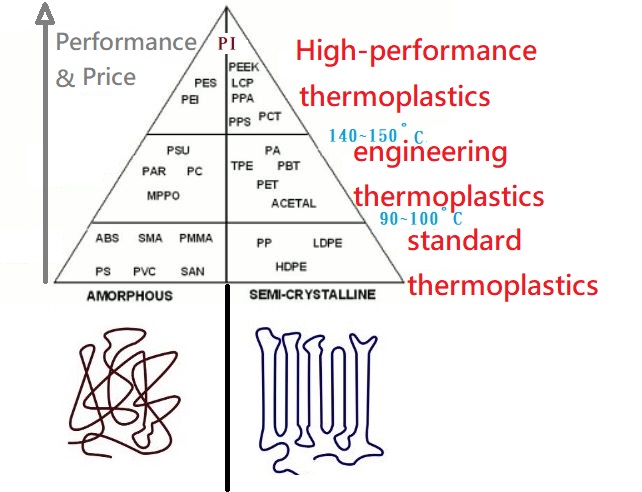
Our related videos

Knowledge
Difference in properties between Crystalline and Amorphous in thermoplastics
Topnano uses PET Film, PI Film and other high-performance engineering plastics for roll-to-roll sputtering. In some cases, we also receive requests for nano-metal sputtering on LCP Film and other substrates developed by our customers.Most of these plastic substrates are thermoplastics that can soften and reshape when heated, but these products need to be noted that there are temperature restrictions when using them.
Since different material characteristics will affect the sputtering quality, we would like to organize some knowledge and differences related to engineering plastics for your reference.
The difference in molecular structure of thermoplastics is divided into crystalline plastics and amorphous plastics.
1.SEMI-CRYSTALLINE Plastics Features:
- Semi-crystalline polymer molecular chains are arranged in an orderly manner, with a degree of crystallinity usually between 10% and 80%, forming an ordered lattice structure, resulting in a well-defined melting point. This well-defined melting point makes them difficult to thermoform because the molecules only become mobile above the material's melting point.
- These crystalline plastics have high hardness, rigidity, chemical resistance and tensile strength.
- Crystalline plastics have strong interactions between molecular chains, so they have a high elastic modulus at high temperatures (above the melting point). However, crystalline plastics can become brittle.
- Easily brittle at low temperatures and has poor impact resistance.
- Good stability after processing.
- Crystalline plastics are usually opaque because there are many interfaces between crystalline and amorphous regions within the material, and light is scattered at these interfaces.
- Common crystalline plastics include: polyethylene (PE), polypropylene (PP), polyamide PA6, PET, PBT, etc.
- Amorphous plastics usually have disordered molecular chains and no clear lattice structure.
- These amorphous plastics are softer and have lower hardness.
- Amorphous plastics have lower melting points and therefore can be processed into desired shapes at lower temperatures. They have some elasticity and impact resistance at room temperature.
- Amorphous plastics generally have higher transparency because their interface density is lower.
- Poor stability after processing.
- Poor wear resistance and chemical resistance.
- Common amorphous plastics include polyvinyl chloride (PVC) and polystyrene (PS).

